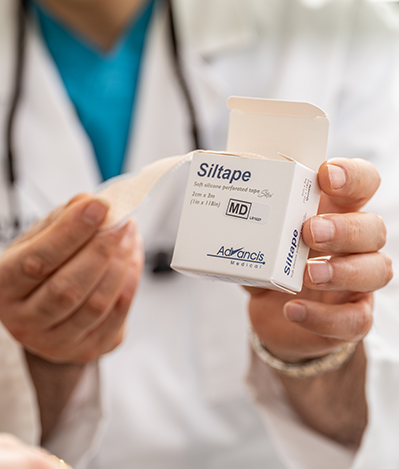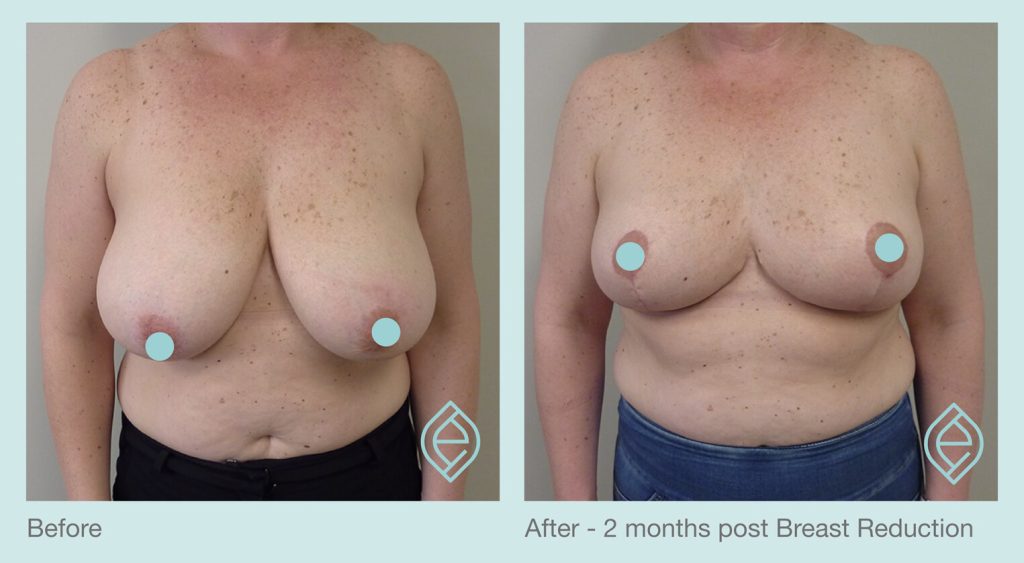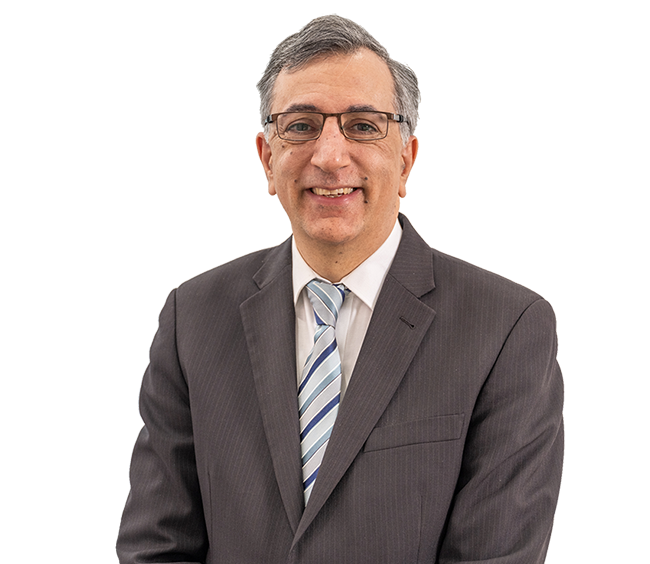Procedure Spotlight
- Every time the skin is cut, no matter the reason, it heals with a scar
- Some scars can become very obvious or unsightly
- Specialist Plastic Surgeons are highly trained to minimise the visibility of scars
- There are 4 common types of scar – keloid, hypertrophic, poorly executed and traumatic scars
Every time the skin is cut, be it from an accident or as a planned incision for surgery, it heals with a scar. For various reasons scars may become very obvious or unsightly. Scar revision is a common plastic surgery procedure, where these scars can be hidden or improved. The procedure is also sometimes called ‘scar removal’ or ‘scar reduction’.
Specialist plastic surgeons are highly trained to minimise the visibility of scars and make existing scars less visible. This is one of Dr Safvat’s areas of expertise. However, no one can promise to operate and cut the skin without getting a scar or make a scar disappear altogether.
To simplify the picture there are 4 common types of bad scars:
Keloid Scars
People often call all bad scars Keloids. In fact, individuals who get keloid scars have a genetic predisposition to this. They usually get keloids wherever they are cut. This is more common in the darker skin individual, but can happen even in people with paler skins. Keloid scars are not limited to the site of injury and can spread beyond the limits of the cut. They can also occur any time after the injury, and often do not reduce or fade further without treatment. . Also certain areas of the body are more prone to Keloid scarring for example earlobes, middle of the chest and shoulders. Keloids are also very difficult to treat and have a high recurrence rate.
Hypertrophic Scar
Hypertrophic scars occur when somewhere along the healing process something delays the healing and causes a raised and thicker scar. For example, this can be infection, excess tension on the wound, severe friction or loss of significant tissue, etc… It is limited to the site of injury and does not spread beyond the wound. Individuals with hypertrophic scar usually heal normally and have normal scar elsewhere. Hypertrophic scars will eventually settle, become slightly less raised and more pale, provided the aggravating event is resolved. Most people mistake hypertrophic scars with Keloids. Hypertrophic scars respond well to treatment.
Poorly Executed Scars
Poorly executed scars are closed either under too much tension, or put in directions or at sites, that are more obvious. Plastic surgeons are highly trained to put scars in natural skin creases or shadow lines, and close wounds in layers and without tension. The location and orientation of a scar have a significant impact on how noticeable a scar is.
Traumatic Scars
Traumatic scars are not uniform. Some are clean lacerations from a sharp object. Others have variable amount of shearing or crushing component to them. By and large, the former will heal better and the latter will result in a poorer scar. Scars take up to a year to mature and can be improved in this time. This can be done by sun protection, scar massage and applying silicone to the scar. It is also imperative to stop smoking as it impairs all wound healing and causes poorer scarring.
Technique
To perform scar revision surgery and make a scar less unsightly, Dr Safvat initially investigates what has gone wrong to cause the bad scar and then plan to rectify the scar if possible.
He will assess each scar and discuss with you what the best treatment is. There are various approaches and techniques to improve the appearance of scars.
At times a series of steroid injections and other non-surgical management is all that is needed to reduce a scar. Other times scars can be surgically realigned, broken up, or set within a wrinkle fold or shadow line so that they are less obvious. For some patients, their hypertrophic or stretched scar can just be cut out and redone without tension. Occasionally, Dr Safvat uses fat grafting (transferring some fat from one part of the body to under the scar) to enhance the quality and appearance of the scar after a scar reduction surgery.
True keloid scars are difficult to treat and have a success rate of about 60%. Often the more different modalities that are tried the better the chance of success. These include surgically cutting part of the scar (called intra-lesional excision), post-operative radiotherapy, steroid injection and silicone sheeting.

Most scar revision surgeries are performed as a day procedure. But some scars require more complicated surgery and an overnight stay at the hospital may be required.
Procedure Snapshot
| Anaesthetic Type: | Local with sedation or General Anaesthetic |
| Length of Surgery: | 60-90 minutes in most cases |
| Stay in Hospital: | Day Stay |
| Downtime: | Approximately 1 week |
Recovery
Patients usually go home the same day of the procedure. You can expect to have some bruising and/or swelling around the incision area for up to about a week. You may experience some mild pain which can be controlled by over-the-counter pain medications. There is little downtime involved and most patients can return to work (depending on their work) and resume most daily activities after a day or two. Strenuous exercise and activities which could stretch or put pressure on the scar should be avoided for several weeks.

Preparation
Smoking has been shown to cause complications after scar revision surgery. Dr Safvat prefers that you stop smoking 3 weeks prior to your surgery wherever possible. You may have to stop certain medications such as blood thinners or some herbal medicines. Dr Safvat will discuss this with you during consultation. It is also important that the patient is prepared to diligently follow Dr Safvat’s Scar Management Protocol following the surgery as well as have realistic expectations about the outcome.
Scars
There is no way to prevent scars completely, even with Scar Revision Surgery. However, the techniques Dr Safvat uses to suture his wounds are designed to minimise scarring. What’s more, any scarring will fade over time, especially if they are cared for correctly.
Dr Safvat will provide you with his specific protocol for scar management that will help you protect and care for your incisions in a way that will minimise scarring. Patients who have followed Dr Safvat’s protocol for scar management diligently have been very pleased with their progress in reducing and fading of scars.
Dr Safvat will also include LED Light Therapy sessions (available in Miranda only) which will assist with wound healing, scarring and recovery.

Complications
While all care and diligence is taken by Dr Safvat to minimise or avoid complications, any surgical procedure can be associated with some general complications and/or specific complications related to the surgery you are having. Choosing a Specialist Plastic Surgeon such as Dr Safvat and having your procedure done in an accredited hospital minimises risks, as does using accredited Anaesthesists.
Some general surgical potential complications are:
• Infection that may require antibiotics (Dr Safvat prescribes all patients antibiotics after surgery to minimise this risk).
• Fluid build-up under the skin (seroma).
• Allergic reaction to dressings and other items used during the procedure.
• The formation of blood collection (haematoma) which could require additional surgery.
Some potential complications related to Scar Revision surgery specifically are:
• Recurrence of Keloid or hypertrophic scarring.
• Scar not improving after the revision surgery.
Cost
Scar Revision surgery has a Medicare item number and patients should get a rebate from Medicare and their health fund (where applicable). The hospital costs are usually covered by private health funds depending on the patient’s level and type of coverage. Alternatively, you can have the procedure done in a Private Hospital as a Self-Funded patient.
Detailed information regarding costs will be provided to you after your initial consultation.
Frequently asked questions
Is Scar Revision Surgery the right choice for me?
This is an individual choice and a procedure that is completely elective and you need to weigh up the pros and cons based on the information Dr Safvat has given you.
Surgical scar revision may be right for you if you are overall healthy and have realistic expectations. If the scar is causing you pain, discomfort or limiting your movement and mobility then this may also indicate that scar revision is right for you. The aesthetic concerns of a scar may also be taken into consideration when making a decision whether to go ahead with the procedure.
What Can I expect over the long term after Scar Revision surgery?
The results of the Scar Revision are variable depending on the aetiology but after the scar matures, it is usually permanent. It is strongly advised that you follow Dr Safvat’s Scar Management Protocol diligently to ensure the best results.
Are there any alternatives to Scar Revision surgery?
There are several non-surgical options for scar revision such as steroid injections, laser, scar creams, Fat grafting and radiotherapy. All options should be considered by the patient prior to deciding on Surgery as the option for them.
When do I expect to see the results from Scar Revision Surgery?
To see the final results of scar revision surgery can take up to a year. Initially the scar may look worse following surgery however it will gradually improve and become less visible over time. It is important to follow Dr Safvat’s specific Scar Management Protocol diligently following the surgery to ensure the best possible results.
Does scar revision surgery work?
In most cases, scare revision surgery is quite successful. However, it is important to remember that a scar cannot be removed entirely. However, scar revision surgery should make the scar smaller, less noticeable and less deformed.
When should I have scar revision surgery?
Scars can take up to one year to mature completely. It is best to wait until at least a year after the initial scar was obtained before making the decision to have scar revision surgery.
Before and Afters



You must be over 18 years to view Dr Safvat’s before and after image galleries
Dr Safvat is a fully qualified Specialist Plastic Surgeon. Every patient is unique and results may vary. Any surgical procedure carries risks which need to be discussed with your doctor to ensure you are fully informed and realistic outcomes have been explained. Before proceeding, you should seek a second opinion from an appropriately qualified health practitioner.
These photos are of actual patients of Dr Safvat. Each has given consent for the photos to be used by Dr Safvat only.
DR ANDRE SAFVAT (MED1155201)
Registered Medical Practitioner, Specialist Plastic Surgeon (specialist registration in Surgery – Plastic surgery).
Dr André Safvat – Specialist Plastic Surgeon
Renowned for his dedication to his patients,
his attention to detail and impeccable outcomes,
Dr Safvat’s unparalleled expertise is reflected in the quality,
professionalism and dedication of every member of our team.


